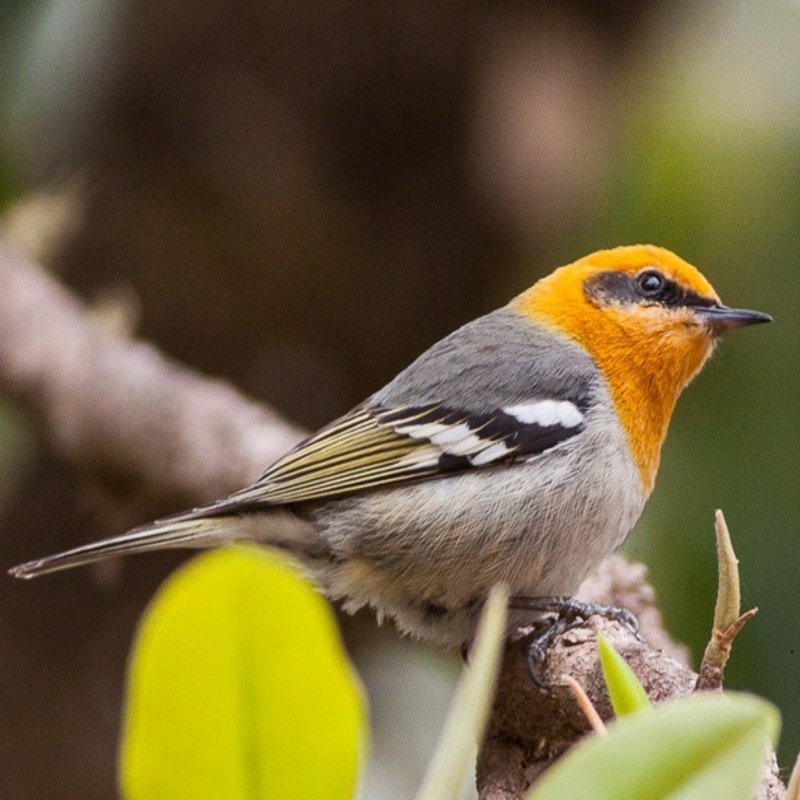Even though the Olive Warblers or Peucedramus taeniatus in Latin, is commonly referred to as “warblers,” these medium-sized, long-winged songbirds are actually classified as belonging to a separate bird family, the Peucedramidae. It is the only Peucedramus species in the family Peucedramidae. They are native to North and Central America, southwest United States and as well as the Caribbean.
Quick Overview: Peucedramus Taeniatus – Olive Warbler
Body size: Around 5.25 in (13 cm) and weighed 11 g (0.4 oz)
Main colors: Gray, White, Black, Orange-brown
Range: Southwest United States
Migratory Bird: Yes
Best time of the year to see in the U.S.: All Year (January – December)
Conservation Status: Least Concern
Olive warbler Description
White belly and undertail coverts on a medium warbler with a gray back. Orange-brown on the head, neck, nape, and upper breast; black mask. Black wings with two wide white bars. Dark gray with white edges tail. They also have black legs and feet.

Size
The length of the body ranges from 5.25 in (13 cm) and weighed 11 g (0.4 oz) and the width of the wings ranges from 8.5 in (22 cm).
Feeding
It primarily consumes insects and forages for food in trees, walking on the branches in search of prey.
Habitat
They prefer ponderosa pine, alder, fir, Douglas-fir, and mixed oak-pine woodlands. They almost exclusively use pines for foraging and nesting. They may use palms in coastal areas.
Behavior
The African silverbill is a tame and sociable bird that can often be found perched in dense flocks in trees, their wings touching one another. Despite this, it is a particularly inactive bird, preferring to remain huddled together for extended periods of time. It remains in flocks throughout the year and breeds in loose colonies most of the time.
Peucedramus taeniatus Scientific Classification
- Kingdom: Animalia
- Phylum: Arthropoda
- Subphylum: Chelicerata
- Class: Aves
- Order: Passeriformes
- Family: Paucedramidae
- Genus: Paucedramus
- Species: Paucedramus taeniatus
Best time of the year to see
In the United States, the best time of year to see these birds is all year round, regardless of the season. This refers to any month of the year between January and December.
Distribution of the Olive warbler in the USA
These critters can be found throughout the southwest United States, from Yavapai County, Arizona, to the southwestern tip of New Mexico, and even as far east as the mountains of far western Texas. Their range in Mexico extends from central to southern Mexico, with isolated populations in Tamaulipas and Coahuila in northeastern Mexico, Sonora and Chihuahua in Northwestern Mexico, and Tamaulipas and Coahuila in southern Mexico.
The Olive warbler can also be found in the following states in the United States – Arkansas, Arizona, Louisiana, Minnesota, Massachusetts, Michigan, Mississippi, Montana, Ohio, and Oklahoma.

